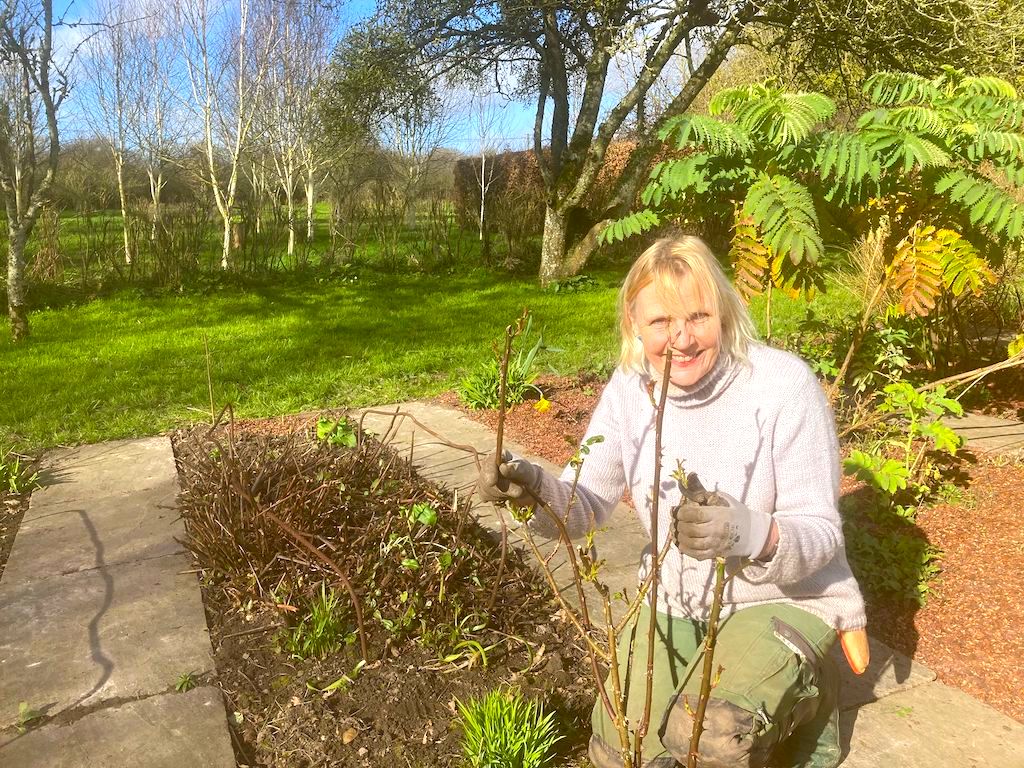
Aarrggh! All of a sudden it’s mid-March and the gardening jobs are multiplying as the big growing season gets under way. It’s exciting too, though! Here are a few ideas to spur you into action – rose-pruning, spring planting, potting on seedlings and lots more…….
How to prune bush roses
My main task for March is completing all the rose-pruning. I do grow quite a lot of roses 😳, and so it is rather a long job. But it makes such a difference to the floriferousness (what a word!) of the garden, that it can’t be ignored. Yes, yes, I know roses WILL flower without any pruning at all, but you want them to do their very best for you, don’t you?
The roses that most folk grow these days are known as ‘bush roses’ – these are the hybrids that are either cluster-flowered or single-flowered, that you grow as…. well, bushes! They encompass the rose-groups known as Hybrid Teas and Floribundas.
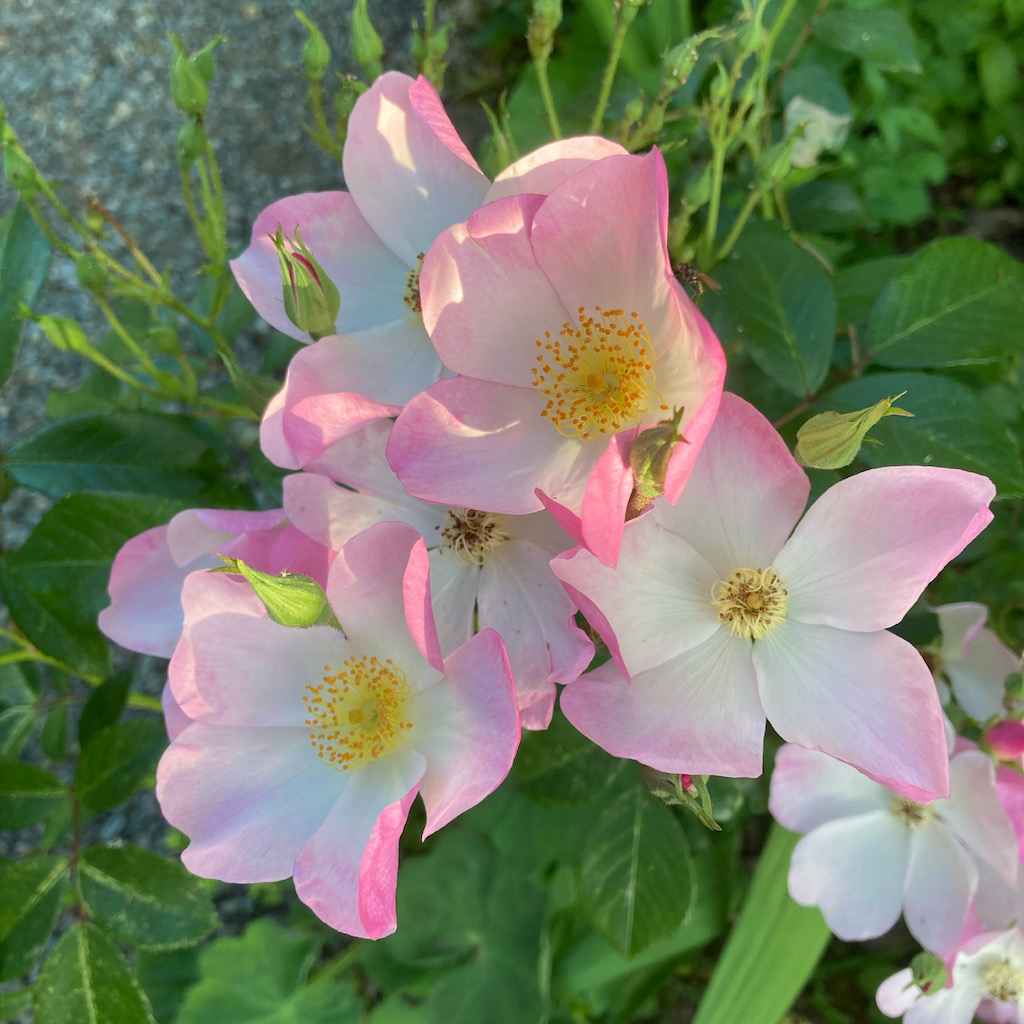
Rather oddly, what you are trying to persuade them to do is to concentrate their resources into producing fewer shoots. These stems will in fact carry much better-quality blooms this summer on a stronger, more disease-resistant plant. This is what you do:
- Cut out completely any weedy thin growth – that is never going to yield you the flowers that you’re after.
- Cut out any dead stems or spurs or any parts that are damaged – or even broken by the recent severe weather.
- Now look at the shape of the bush and cut out any stems that are growing determinedly into the centre of the plant – good air circulation will really help it to combat disease.
- Lastly, prune all the remaining stems down to between a half and a third of their length. The received wisdom was always to cut down to 3 buds from the base, but I have to confess that I have a lot of these roses, and I simply cannot be faffed to do all the counting. But I do always cut down to a leaf-bud, and if that is outward-facing, then so much the better.

That’s it. With your bush rose now looking in much better fighting shape, give them a feed – roses are quite greedy when it comes to nutrition – and then repeat that treatment, if you remember, throughout the summer at say, monthly intervals. Fertiliser, used at half the strength, that you would use for tomatoes, is a good choice, or perhaps Top Rose Gold or Uncle Tom’s Rose Tonic – you want to use something with a bit of oomph to it, if you can.
Spring planting
Oh, my goodness, it’s been a very wet winter, hasn’t it! The deluge has slowed up a little round here, thank heavens, but some of the perennial garden plants that come from the Mediterranean have not enjoyed the soggy conditions one bit. I think (hope) most of mine will pull through because they are already established. But it reminds me to mention that some plants are much better planted in the spring rather that the autumn, for this very reason.
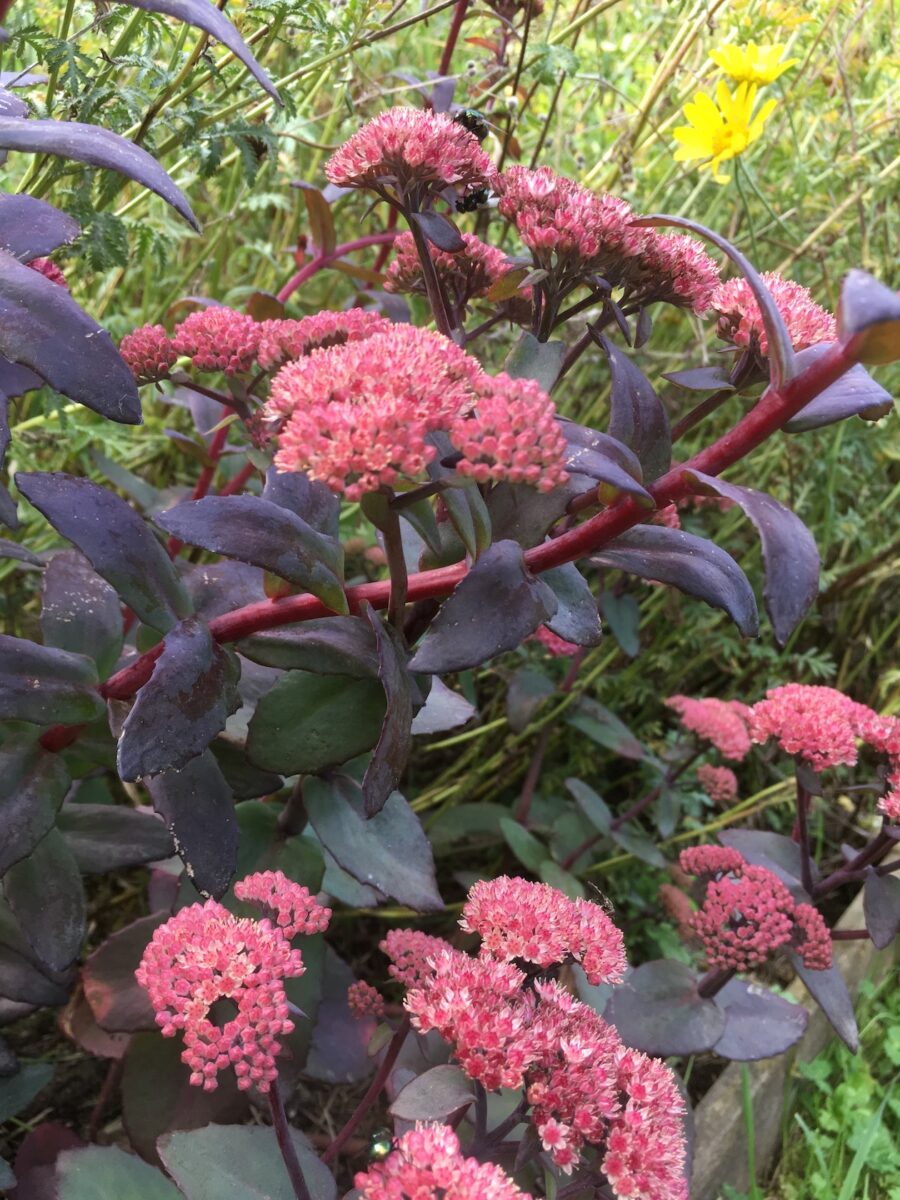
Before they have got their roots properly down into the soil, the crowns of young plants are very susceptible to rotting in their dormant season in very damp conditions. If you plant them in spring, you will be giving them the whole main growing season to become strong and resilient enough to survive the following winter.
So what plants are we talking about here? All of the ‘warm-season’ grasses for a start, including Panicum, Pennisetum, Sporobolus, Anamanthele, Eragrostis and Miscanthus. And then there are other perennial beauties that would much prefer this treatment: Hyelotelephium (Sedum, ice plant), Nepeta (catmint), Eryngium (sea holly), Echinops (globe thistle), Gaura and Lavender spring to mind immediately. If you are not sure about the particular plant you are buying, do a bit of research first on the conditions it needs to thrive.
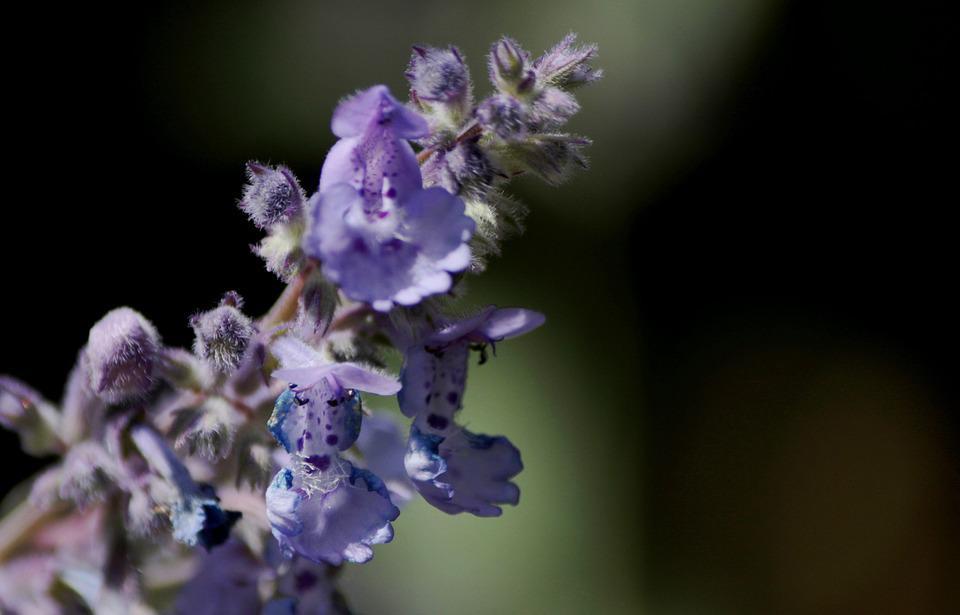
This idea of planting in spring rather than autumn applies to tender plants like dahlias, cannas, salvias etc. They may be fine to get through a frosty winter once they’re established but don’t make them brave it out in their first season in your garden!
Gardening shorts
- We are very pleased to be hosting a lovely piece written by the Davidsons at Abriachan Nurseries on the west coast of Loch Ness about primroses – those delightful, scented harbingers of spring. Please do enjoy this short article here.
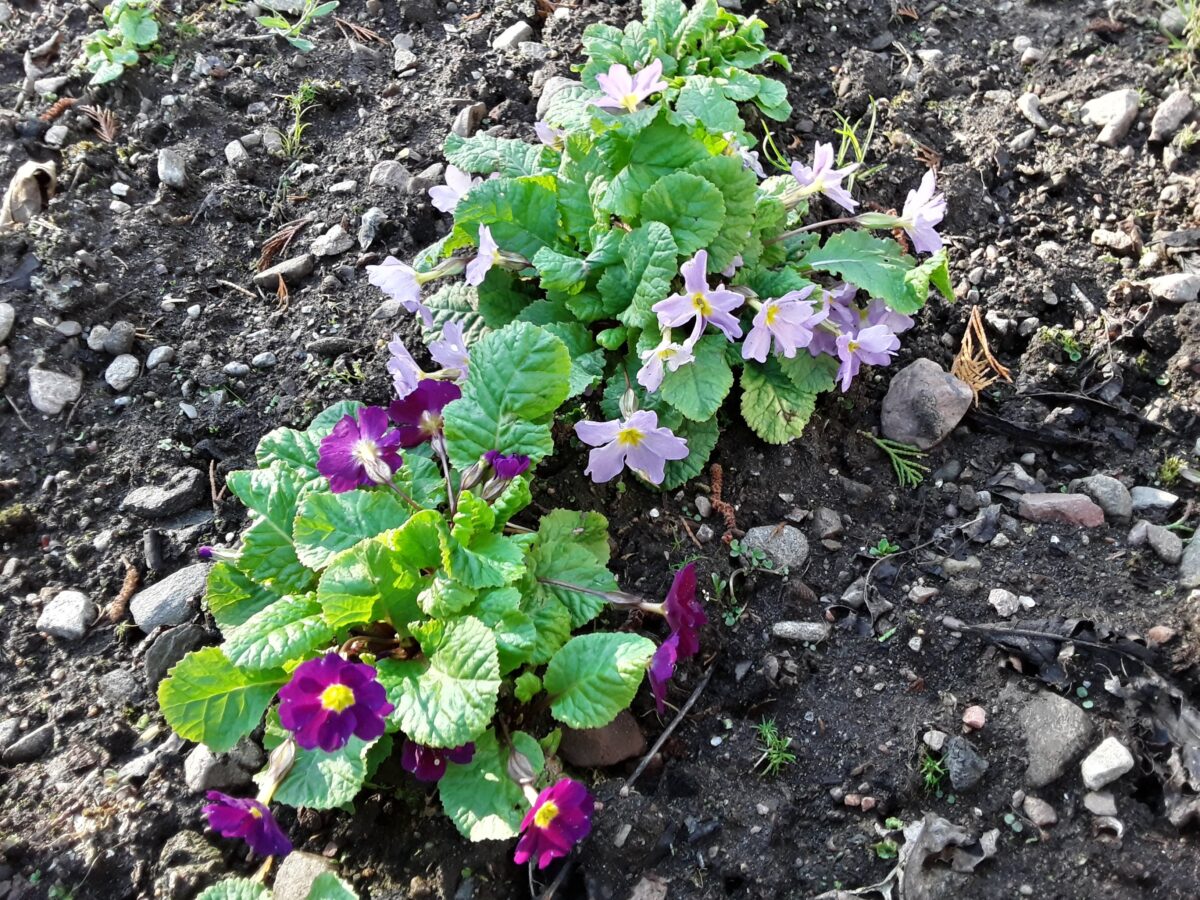
- This is THE time to be giving all your beds and borders a real SPRING-CLEAN! Working through each area, oiking out any weeds and tiding the surface of the soil of leaves and debris. I have two perfect implements for this; a perennial spade and a border rake. The spade is great for making sure that you don’t leave bits of dandelion or dock root in the soil to start growing again as soon as your back is turned. And the rake is just right for clearing the ground of mess ready to show off your wonderful plants. The good news is that we stock both these brilliant items in our online shop, so do have a look when you’ve finished reading this article. There’s a link at the bottom.

- Have you started sowing all your seeds? March is the month to get most of them going, and I have already got a few that need moving out of their ‘beginner’ pots and into their own space to grow on. In fact, I was doing exactly that yesterday, with my five-year old grandson who’s turning into a keen gardener – I’m just annoyed with myself that I didn’t have the camera handy! Watch this short video on how to do it as well as he did.

- The seed potatoes are chitting nicely in their open boxes inside on a bright windowsill, developing strong stocky shoots. I shall plant them into the veg plot at Easter. It’s not too late to start this process now, and gives your spuds a welcome head start, leading to an earlier (and hopefully improved) harvest.
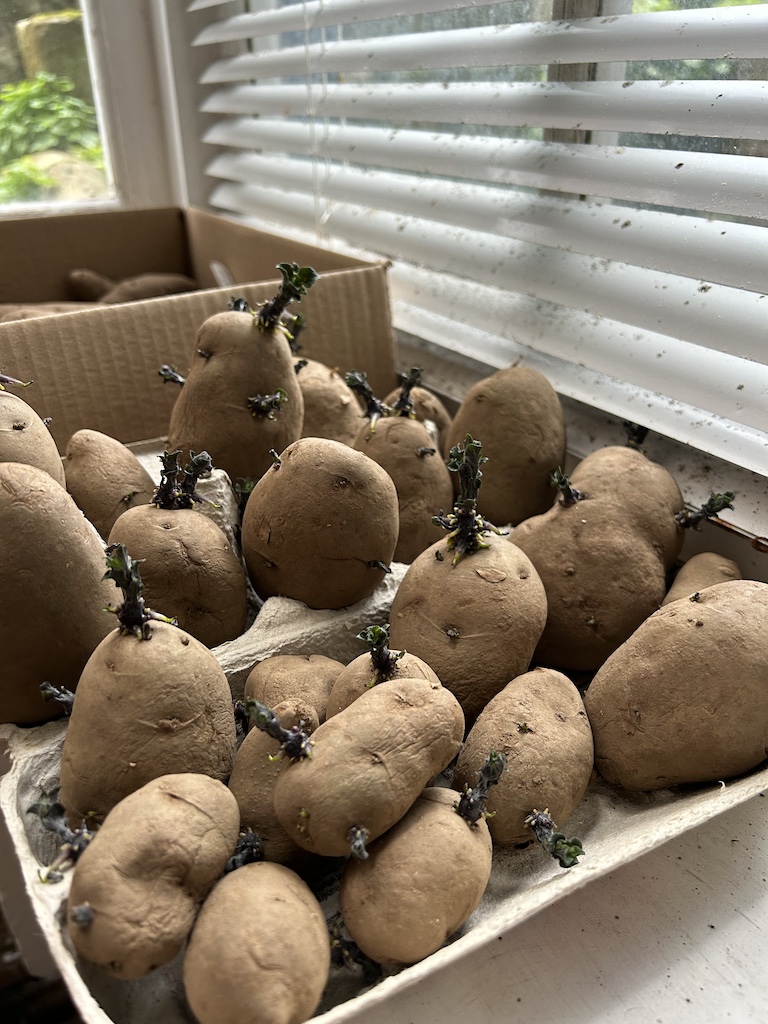
- Divide clumps of snowdrops while the leaves are still green, replant them in groups of bulbs where you want them and let the leaves die down naturally.
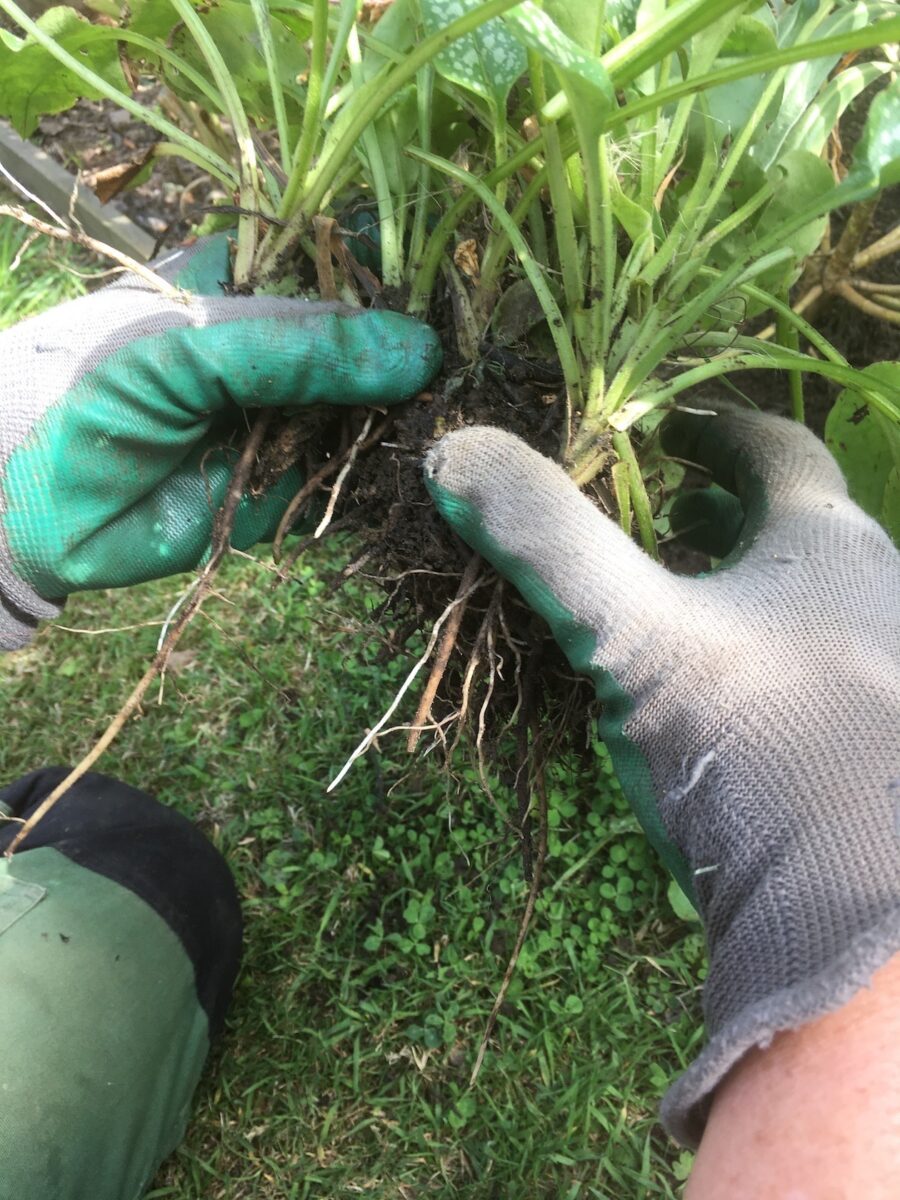
NB: Here’s an easy tuberous hardy perennial with lovely ferny grey-green foliage and tubular pink flowers. It’s Louise’s Great Plant of the Month:
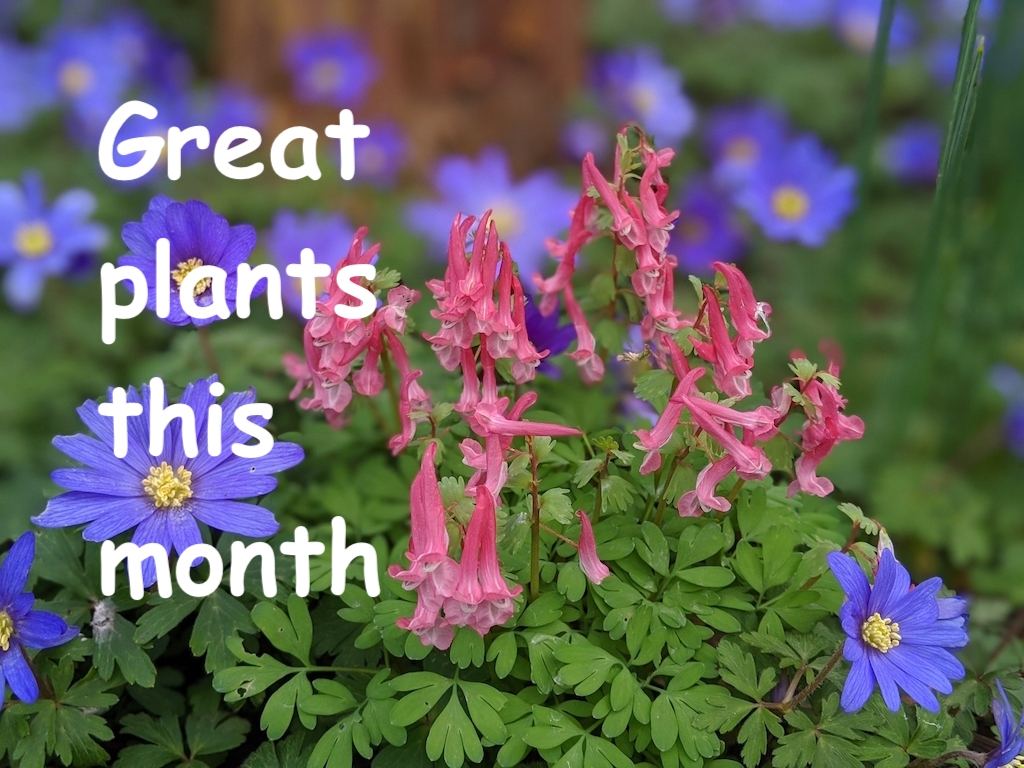
More NB: Visit the garden tools page of our online shop to have a look at that super rake, or the perennial spade:

Yet more NB: If you’re not already a subscriber and you’d like a bit more gardening chitchat from the3growbags, please type your email address here and we’ll send you a new post every Saturday morning.
